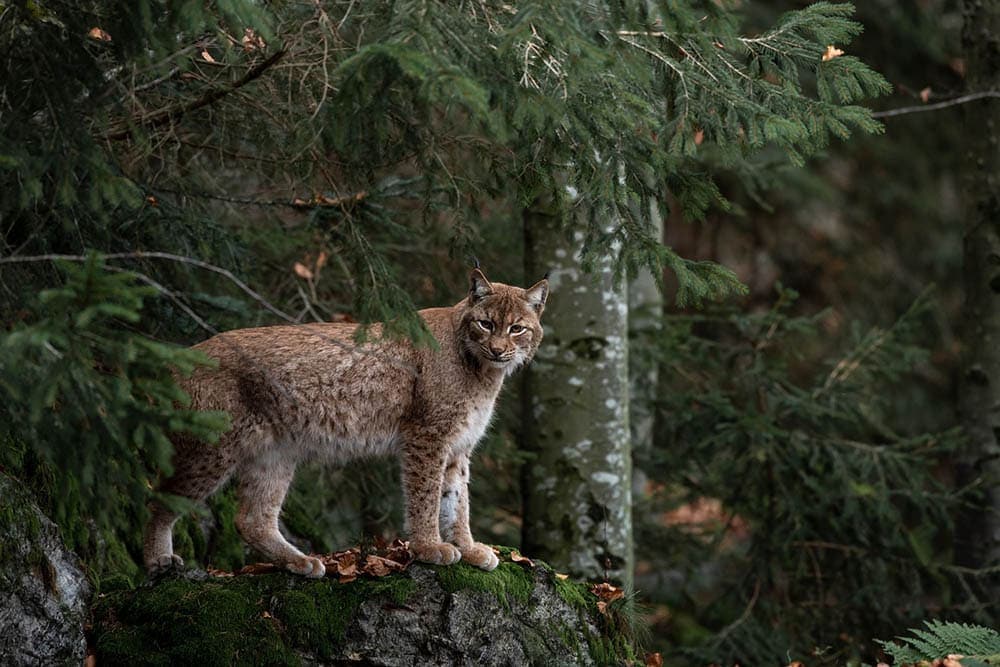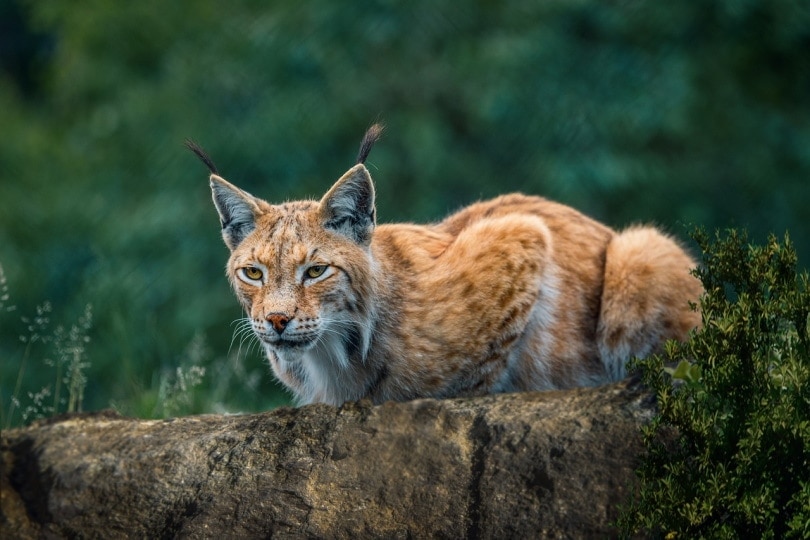New York State is home to several wild cats. Although wild cat sightings are quite rare in areas populated by humans, there’s still a chance that you can see one. If you’re in New York or one of the other northeastern states, you can expect to find a few species of wild cats. Let’s get to know these cats and what to do to keep you and your pets safe.

The Wild Cats Found in New York
The United States is home to six species of wild cats. Two of these species commonly live in New York: the Canada lynx and bobcat. The Eastern Mountain Lion used to inhabit areas all across America, including New York. However, they’ve been absent for nearly 200 years and now live in the Western States and a small area in Florida.
1. Canada Lynx

The Canada lynx is a small wild cat that’s similar in size to a large Maine Coon. They have thick fur that can be gray or light brown and charcoal spots. They also have large ears with black tufts, a black-tipped tail, and large round feet.
Canada lynxes can grow to about 22 inches tall and weigh up to 30 pounds. Despite their small size, the Canada lynx can be dangerous if provoked. It’s a wild animal that cannot be domesticated.
This wild cat lives in coniferous and deciduous forests. It prefers to avoid humans, and sightings in the wild are quite rare due to its evasiveness and small population numbers. Canada lynxes also tend to be more active at night.
2. Bobcat

Bobcats are the most prevalent wild cat in North America. They live in several regions across the States, including New York.
These wild cats have black, pointed ears, short tails, and brown or gray fur. They can also have rosettes, spots, and stripes running along their bellies and legs. Bobcats are slightly smaller than Canada lynxes. They can grow to about 20 inches tall and weigh between 13-30 pounds.
Bobcats prefer to live in areas with dense vegetation and lots of small prey. They typically hunt birds and mammals, such as chickens and rabbits.

How To Keep Your Pets Safe From Wild Cats
Since wild cats tend to be shy and elusive, it’s unlikely that they’ll preemptively attack your pets. However, if you live in an area with wild cat sightings, it’s better to be safe than sorry and make sure that you’re doing all you can to keep your pets safe. Here are some things you can do to protect your pets from wild cats.
Stay Up to Date With Vaccines
Wild cats can transmit diseases, such as rabies. Rabies is often transmitted through a bite, but the virus can also enter the body through any opening, such as eyes, nose, and mouth. Therefore, it’s best to keep your pets up to date with their rabies vaccines.
Keep Pets Leashed
If you’re hiking with a pet in a state park, make sure that it’s leashed. Wild cats may be small, but they’re strong and can hunt animals larger than them, such as deer. Although a wild cat isn’t likely to charge toward your pet, it may attack if it’s startled and trying to defend itself.
Keep Your Backyard Well-Lit
Many nocturnal animals avoid brightly lit areas, so installing lights in your backyard can help deter them. However, pet owners should never leave their pets unattended in areas with wild cat sightings. Bright lights don’t guarantee that a wild cat won’t enter your yard. Also, a Bobcat can jump up to 12 feet, so it can easily clear a 6-foot fence.

Clean Up After Yourself
Wild cats can be attracted to the smell of food. So, they may try to venture onto your property if you leave food out. Consistently having food out in your yard can signal to wild cats that they can expect to find food there. So, make sure to do a thorough job of cleaning up after yourself and shutting garbage bin lids securely.
Make Loud Noises
If you happen to come across a wild cat, it’s best to avoid it and create as much distance between you two. However, if a wild cat keeps advancing in your direction, you can try to scare it away by making loud noises. Clapping, yelling, and banging metal objects together can startle it and make it think twice about getting closer to you.

Final Thoughts
New York is home to Canada lynxes and bobcats. Although both these wild cats are small, they can be dangerous when provoked. So, it’s best to admire them from a distance and not go out of our way to get closer to them.
Featured Image Credit: miroslav chytil, Shutterstock
